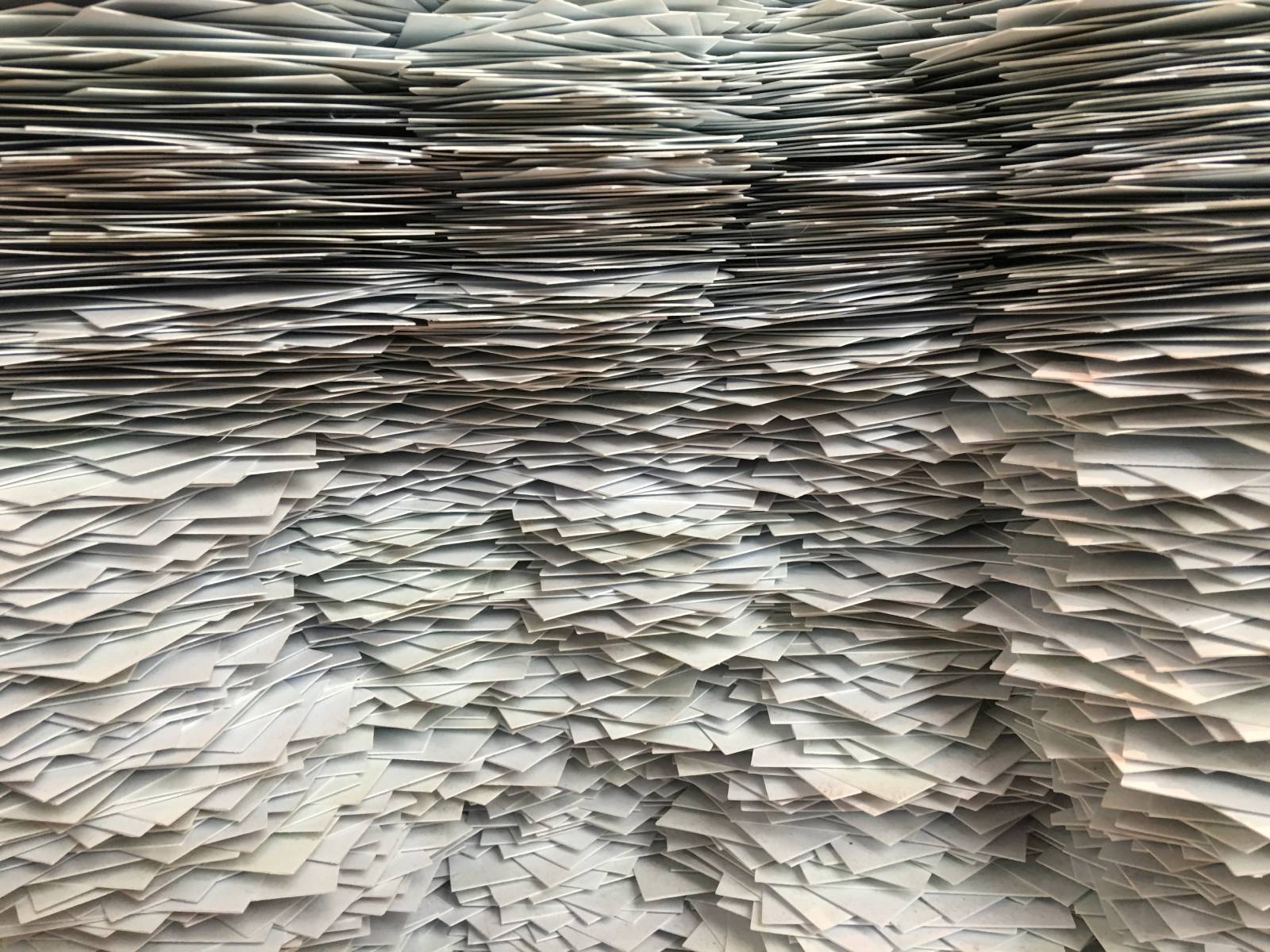Table of Contents
Understanding Paper Weights and Their Significance in Printmaking
The Basics of Paper Weights: A Closer Look at the Intricacies
Paper weight, a seemingly simple concept, carries a great deal of significance in the world of printmaking. The weight of a sheet of paper is measured in grams per square meter (gsm) or pounds (lbs), and it denotes the thickness and density of the paper. Heavier papers, being more durable and resistant to wear and tear, are often preferred for their sturdiness and longevity. On the other hand, lighter papers, although more delicate and prone to damage, can offer a unique and ethereal quality to the finished artwork.
Unraveling the Importance of Paper Weights in Printmaking
The role of paper weight in printmaking extends far beyond mere aesthetics. It holds the key to a successful print, as it directly impacts ink absorption, texture, and the overall appearance of the artwork. A carefully chosen paper weight can bring out the intricate details of an artist’s design, create rich, vibrant colors, and ensure the print’s longevity.
When selecting the ideal paper weight for a printmaking project, it is crucial to strike a delicate balance between the paper’s sturdiness and its ability to absorb ink and retain fine details. A deeper understanding of paper weights and their implications in printmaking enables artists to make informed decisions, ultimately leading to exquisite and enduring prints.
Hand Printmaking with a Baren: Suitable Paper Weights
Hand Printmaking and the Baren: A Time-Honored Tradition
The art of hand printmaking with a baren is a time-honored tradition that requires a gentle touch and an astute understanding of the paper’s characteristics. A baren is a handheld tool used to apply pressure evenly across the paper, transferring ink from a relief wood block, lino sheet or plate. This delicate process demands a keen awareness of the paper’s weight, as it directly influences the ink transfer and the preservation of intricate details.
Optimal Paper Weights for Baren Hand Printmaking: Striking the Perfect Balance
When using a baren for hand printmaking, it is essential to select a paper weight that allows for the seamless transfer of ink while preserving the fine details of the design. Lighter papers, ranging from 60-100 gsm, are generally recommended for this technique, as they offer flexibility and are easier to manipulate by hand. However, it is imperative to strike a balance between the paper’s flexibility and its ability to withstand the pressure exerted by the baren without tearing or compromising the print’s quality.
Japanese washi paper, with weights typically ranging from 30-70 gsm, is a popular choice for hand printmaking with a baren. Its unique texture and composition allow it to absorb ink effectively while maintaining its integrity under pressure. Western printmaking papers, such as Rives BFK or Arches 88, which range between 90-250 gsm, can also be used, provided they are dampened slightly to increase flexibility and prevent tearing.
Printing Presses: The Ideal Paper Weights
Printing Presses: A World of Precision and Efficiency
Printing presses, both manual and mechanical, have revolutionized the world of printmaking by offering a precise and efficient means to create multiple copies of a print. However, the choice of paper weight is of utmost importance when using printing presses, as it directly impacts the ink transfer, detail, and overall appearance of the finished piece. The right paper weight ensures that the paper can withstand the pressure exerted by the press while maintaining the integrity and quality of the print.
Finding the Perfect Paper Weight for Various Printing Press Techniques
Different types of printing press techniques call for different paper weights. Heavier papers, typically between 150-300 gsm, are recommended for use with printing presses due to their ability to withstand the greater pressure exerted by the machines without tearing.
For intaglio printmaking, where ink is transferred from incised lines or textures on a plate, heavier papers such as Arches Cover, Rives BFK, or Somerset Velvet, ranging from 250-300 gsm, are ideal. These papers possess the sturdiness required to force ink out of the plate’s grooves and onto the paper’s surface, ensuring sharp, detailed prints.
On the other hand, for relief printmaking techniques like linocuts and woodcuts, slightly lighter papers in the range of 150-200 gsm may be used, as they facilitate better ink transfer and minimise unwanted embossing of the paper.
Additional Factors to Consider in Choosing Paper Weights for Printmaking
Paper Type: Exploring Texture and Absorbency
While paper weight plays a significant role in printmaking, it is important to remember that other factors can also impact the quality of your prints. The type of paper, such as handmade, machine-made, or mould-made, can affect the texture and absorbency of the paper, which in turn influences the ink transfer and overall print quality. Each paper type offers unique characteristics that can enhance or detract from the finished artwork, making it essential to consider the specific requirements of your printmaking project.
Sizing: A Crucial Element for Crisp and Clear Prints
Sizing, the treatment of paper with a substance that makes it more resistant to water and ink, is another critical factor in selecting the perfect paper for printmaking. Papers that are adequately sized will prevent ink from bleeding or spreading, ensuring crisp, clear prints. The degree of sizing may vary depending on the type of ink being used, making it important to choose a paper that is compatible with your chosen ink.
Ink Compatibility: Matching Paper and Ink for Optimal Results
The compatibility between the paper and the type of ink being used is vital in achieving exceptional prints. Some papers work better with oil-based inks, while others are more suited to water-based inks. Understanding the nuances of ink compatibility and how it interacts with different paper weights and types can help you avoid potential issues and ensure the best possible outcome for your printmaking endeavors.
Here’s a table comparing paper weights and their applicable styles of printmaking:
| Paper Weight (gsm) | Paper Weight (lbs) | Suitable Printmaking Techniques | Examples of Paper |
|---|---|---|---|
| 30-100 | 20-27 | Hand Printmaking with a Baren (Washi) | Japanese Washi Paper |
| 70-100 | 19-27 | Hand Printmaking with a Baren (Western) | Lightweight Western Printmaking Paper |
| 90-250 | 24-66 | Hand Printmaking with a Baren (Dampened) | Rives BFK, Arches 88 |
| 150-200 | 40-54 | Relief Printmaking (Linocuts, Woodcuts) | Medium-weight Printmaking Paper |
| 250-300 | 66-81 | Intaglio Printmaking (Etching, Engraving) | Arches Cover, Rives BFK, Somerset Velvet |
Please note that the table provides a general guideline, and specific requirements may vary depending on the artist’s preferences and the particularities of the printmaking project. It is always a good idea to test different paper weights and types to find the best match for your specific technique and style.
Final Thoughts
The world of printmaking is a complex and rewarding one, and understanding the nuances of paper weights is a critical step in achieving stunning prints. By considering the information presented in this article, you will be well-equipped to make informed decisions about paper weight, hand printmaking techniques, and printing presses. Armed with this knowledge, you are ready to embark on your artistic journey, exploring the limitless possibilities of printmaking.







